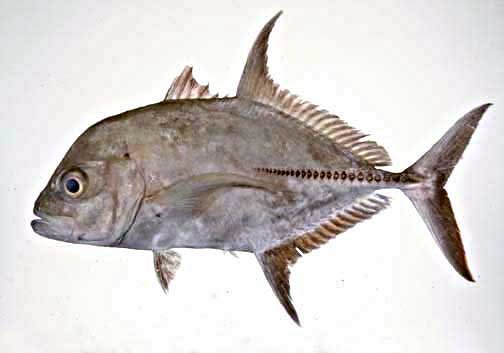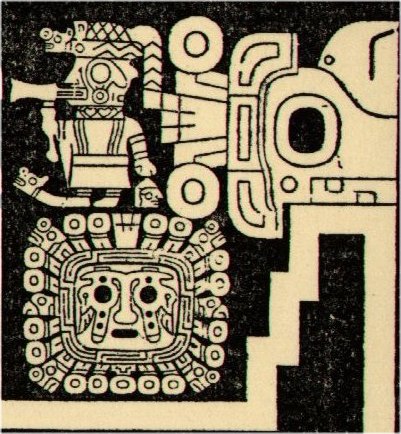|
Several of the Polynesian dialects (though not Rapanui)
agree in pe meaning 'spoilt', no longer of acceptable
quality:
|
Pe
1. Like, as. PS Mgv.:
pe, as, the same as, also.
Sa.:
pei, like, as. Niuē:
pehe,
thus. 2. And, also (in numerals);
e rua
te hagahuru pe aha,
twenty-four. PS Sa.:
pe, a
restrictive particle in counting, only. To.:
be,
only. Uvea:
pe, id.
Churchill.
Pau.: Spoilt,
damaged. Mgv.:
pee,
macerated, spoilt. Ta.:
pe,
spoilt, rotten. Mq.:
pe, id.
Sa.:
pe, id.
Ma.:
pe,
pulpy, purulent. Churchill. |
On
Easter Island (and some other islands) the sense of pe is conjunctive ('like', 'and', 'also'). Samoa has pei for
this idea and pe for 'rotten', while Mangareva has pe
for 'also' and pee for 'spoilt'.
Te
Pei is where the calendar of G continues on the back side. Time
goes on, also (pe) when Sun has changed his habit to
become a Rain God. A conjunctive meaning surely is possible at Te
Pei. When Sun dives down into the ocean it becomes
comparatively dark.
Te Pei
... should probably read Te Pe'i ... The pe'i is a large, tasty fish
... caught in the deep waters
of the fishing grounds (hakanononga) ...

8 *
29.5 = 236 days counted from Gb8-30 will be 300 days if 64 days (from
Rogo in Gb6-26) are added. The reason for the 'black fish' is
that the fire in the sky
is finished. It has
reach its 'best before' limit, Sun has only (pe) 300 days.
Old Sun has therefore been
liquidated. In Ca3-10 we
presumably can see the watery mouth:
 |
 |
 |
 |
 |
|
Ca3-9 |
Ca3-10 |
Ca3-11 |
Ca3-12 |
Ca3-13
|
|
30 * 9 = 270 |
30 * 10 =
300 |
30 * 11 =
330 |
30 * 12 =
360 |
30 * 13 =
390 |
But
times goes on and Moon is still there and now she is pregnant.
It will be the same (pe) development once again.
Fornander:
PE,
adj.
Marqu.,
bad, impudent, naked. Ta., pe,
rotten, decayed. Sam., pe,
be dead, as trees,
extinguished, as
fire, dried up, as water. Haw.,
pe,
to crush, pound fine; pepe,
broken, bruised, pliable, rotten, soft;
u-pepe,
weak, feeble, dry. Fiji., be,
impudent, irreverent.
Benfey (Sanskr. Dict.) refers the Latin
pejor,
pessimus,
pecco,
to a Sanskrit word,
pâpa,
evil, wicked, sinful. The Polynesian
pe
apparently offers a better and more
direct root for
pejor,
pecco,
&c.
Benfey gives no root or etymon of
pâpa,
nor, if derived from
pâ,
to protect, to guard, how the transition
is made to wickedness, crime, sin. Here
as in so many instances, the Polynesian
supplies the missing-link in the
Hawaiian verb
papa,
'to prohibit, forbid, rebuke, reprove',
a derivative or duplicate of
pa,
'to fence, enclose, restrict'. And thus
the transition from the Polynesian
papa,
prohibited, forbidden, to the Sanskrit
pâpa,
sinful, wicked, becomes easy and
intelligible.
|
The
mystery of why Metoro said hakaturou at noon
is here presumably solved (because noon is corresponding to high
summer):
 |
|
Aa1-26 |
| ko te ahi -
hakaturou |
The
expression
'blasphemy' (hakaturou) seems to be connected to the fact that Sun is forbidden
(papa) to go on past his predestined limit. Papa is here pa
(fence, restriction) duplicated.
Pi,
pe, pa are basically a string of ideas relating to
the limit of Sun. Certainly we can also add po and pu.
Po
1. Night;
to get dark,
to fall (of night): he-po, it is
getting dark. Formerly used, with or
without raá, in the meaning of a
whole day: po tahi, one day;
katahi te kauatu marima po, fifteen
days; po tahi raá, first day of
the week; po rua raá, po toru raá,
second, third day, etc. 2. Alone or
as po nui, used to express the
idea of good luck, happiness.
He-avai-atu au to'ou po, I wish you
good luck (when taking leave of
someone). Very common was this parting
formula: aná po noho ki a koe!
good luck to you! Po-á, morning;
i te po-á, in the morning; i
te po-era-á, very early in the
morning. Po-ará, quickly,
rapidly, swiftly: he-iri po-ará,
go up quick; he-ta'o itau umu era
po-ará, he cooked it quickly.
Po-e-mahina, formerly used of
sleep-walkers (haha a po).
Vanaga.
1. Darkness, night,
late; po haha, dark night, gloom.
P Tu. po-tagotago, darkness.
Mgv., Mq., Ta.: po, darkness,
night. 2. Calendar day; po e rua,
Tuesday; po o te tagata,
life. P
Pau., Mgv., Mq., Ta.: po,
calendar day. Churchill.
|
|
Pu
1. To come forward to greet someone met
on the road; to walk in front,
to go in front: ka-pú a mu'a, let them go first.
2. Pú a mu'a, to intervene,
to come to someone's rescue; he-pú-mai a mu'a,
he-moaha, he came to my rescue and saved my life. 3.
Ancient expression: ai ka-pú, ai ka-pú, tell us
frankly what you think. 4. Hole, opening, orifice;
well;
circumference, rotundity; swirling water;
pú-haga, vaginal orifice; pú-henua (also just
henua), placenta. He pú henua nó te me'e aau,
he-oti-á; ina-á me'e ma'u o te rima i-topa-ai koe,
a placenta was all you had, it is a past thing now; you
held nothing in your hands when you were born (stern
words said to children to make them realize that they
must not be demanding, since they were born naked and
without possessions). 5. To dig out (tubers): he-pú i
te uhi, to dig out yams. Vanaga.
1. A trumpet.
P Mgv.: pu, a marine shell. Mq.: pu, conch
shell. Ta.: pu, shell, trumpet. 2. A small
opening, hole, mortise, stirrup, to pierce, to
perforate, to prick; pu moo naa, hiding place;
taheta pu, fountain,
spring; hakapu, to dowel, to pierce, to
perforate. PS Sa., Fu., Niuē:
pu, a hole.
Churchill.
Mq.: Pu, source,
origin. Ma.: pu,
root, origin, foundation.
Churchill. |
Pu as a trumpet makes me remember the Gateway of the Sun
in Tiahuanaco, where at the extremes of the year (the
solstices) two identical figures are depicted and they are
blowing trumpets. This is one of them:

We should notice
that these twin figures are looking inwards (like the moai on
Easter Island), and they presumably personify the limits of Sun.
And, remarkably, they appear to have beheaded the Sun - look how in
his left hand a head is dangling. The great sun head itself is
immediately below to make the association clear.
The immense bird
head at right has a sun type of eye (a black pupil in its
center), and above the eye is a 'helmet' divided in 3 parts. But in the crown of the
helmet there are 2 eyes which
ought to be the eyes of the moon. Their pupils are white.
Therefore also
the 5 + 6 * 2 = 17 similar moon eyes around the circumference of
the great sun head should be signs of lunar months: 147½ + 354 =
501½. But the circumference contains also 7 other signs. 7 *
29.5 = 206½, and 501½ + 206½ = 708 = 24 * 29.5.
However, a better
explanation is probably 24 * 29 = 696.
Fractions cannot be represented in the same way as units. 69 * 6
= 414 = 314 + 100. And 414 is also equal to Tama (14 *
29.5) + 1.
If we instead
count 6 * 96 = 576, we will have a nice solar square, 24 * 24.
|




